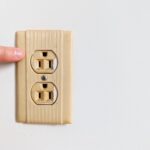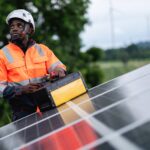Understanding photovoltaic inverters and their role in solar energy systems
Photovoltaic inverters are essential components in solar power systems. They convert direct current (DC) electricity generated by solar panels into alternating current (AC) for use in homes and businesses. These devices come in various sizes and types, including string inverters, microinverters, and power optimizers. Photovoltaic inverters https://onninen.pl/en/products/Photovoltaic-and-energy-storage-systems/Photovoltaic-inverters typically have an efficiency rating between 95% and 98%. Their lifespan ranges from 10 to 15 years, depending on the model and manufacturer.
The choice of inverter depends on several factors. These include the size of the solar array, shading conditions, and budget constraints. String inverters are cost-effective for large systems with consistent sunlight exposure. Microinverters offer better performance in partially shaded conditions. They also provide panel-level monitoring capabilities. Power optimizers combine the benefits of both types, optimizing individual panel output while using a central inverter.
Regular maintenance is crucial for inverter longevity. This includes keeping the device clean and ensuring proper ventilation. Many modern inverters feature remote monitoring capabilities. These allow users to track system performance and detect issues early. Some advanced models even integrate with home automation systems for enhanced energy management.
Comparing 1 phase and 3 phase inverters for different applications
1 phase inverters are commonly used in residential solar installations. They are suitable for most single-family homes with standard electrical systems. These inverters typically handle power outputs up to 10 kilowatts (kW). 1 phase inverters https://onninen.pl/en/products/Photovoltaic-and-energy-storage-systems/Photovoltaic-inverters/1-phase-inverters are simpler to install and maintain. They are also generally less expensive than their three-phase counterparts.
3 phase inverters are ideal for larger commercial or industrial applications. They can handle higher power outputs, often exceeding 10 kW. These inverters distribute power more evenly across three separate AC circuits. This results in improved efficiency and stability for large-scale systems. 3 phase inverters https://onninen.pl/en/products/Photovoltaic-and-energy-storage-systems/Photovoltaic-inverters/3-phase-inverters are also becoming more common in larger residential installations.
When choosing between 1 phase and 3 phase inverters, consider the following factors:
- Total system size and power output requirements
- Existing electrical infrastructure
- Local utility regulations and interconnection standards
- Future expansion plans for the solar array
Consulting with a qualified solar installer can help determine the most suitable option for your specific needs.
Integrating photovoltaic and energy storage systems for enhanced energy independence
Photovoltaic and energy storage systems are increasingly popular for maximizing solar energy utilization. These integrated solutions combine solar panels with battery storage, allowing excess energy to be stored for later use. A typical residential system might include 5-10 kWh of battery storage capacity. This can provide several hours of backup power during outages or periods of low solar production.
Battery technologies for energy storage have advanced significantly in recent years. Lithium-ion batteries are now the most common choice due to their high energy density and long cycle life. Some systems can achieve round-trip efficiencies of up to 90%, minimizing energy losses during storage and retrieval. Advanced energy management systems optimize the flow of power between solar panels, batteries, and the grid.
Photovoltaic and energy storage systems https://onninen.pl/en/products/Photovoltaic-and-energy-storage-systems offer numerous benefits. These include increased energy independence, reduced electricity bills, and improved grid stability. Many utility companies now offer incentives for installing these systems. This can significantly reduce the initial investment cost. When designing an integrated system, consider factors such as daily energy consumption patterns, local electricity rates, and available roof space for solar panels.





